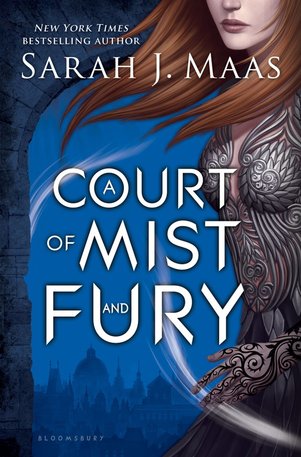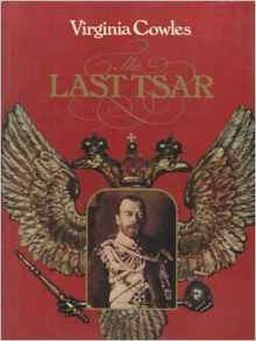 Written by Lauryn Smith As promised, I read “A Court of Mist and Fury” by Sarah J. Maas. You may remember my slightly scathing review of its predecessor, “A Court of Thorns and Roses.” Though I still have some qualms, the second in the “A Court of Thorns and Roses” series exceeded my expectations. The story picks up right where the first left off. In the aftermath of bad girl Amarantha’s demise, Feyre returns to life in the Spring Court with soon-to-be hubby Tamlin. But things are not all roses and daisies anymore. First of all, she has that tattoo linking her mind to Rhysand’s, as well as Rhysand’s pesky bargain regarding Feyre’s living arrangements, to worry about. Add to that Tamlin’s newly developed overprotective personality, and the fact that all in the Spring Court abide by his command to keep Feyre safe by restraining her to the grounds and limiting her access to information. Feyre used to feel thankful for Tamlin’s protection, but now she feels stifled, bored and unchallenged. She also cannot get over the guilt regarding the crimes she committed in order to save everyone from Amarantha’s wrath. In addition, the more she gleans about how the courts work, the more repelled by the system she becomes. Oh yeah, and she now has all the powers of a High Fae, powers that reflect those of each of the courts’ High Lords. On the day of Feyre and Tamlin’s wedding, Feyre falls apart. As he did multiple times in “A Court of Thorns and Roses,” Rhysand pops in and saves the day, whisking Feyre away to the dreaded Night Court. That is when everything changes and Feyre’s perspective shifts. Instead of willingly remaining a veiled treasure, Feyre gets her life back on track. She grows familiar with the people, places and politics of the Night Court, trains to control her potent powers and flirts mercilessly with Rhysand. All the while, a new and fiercer evil looms. And once more, Feyre is key in ending it. Maas again focuses on the good versus evil trope, this time on a dual level, both between the courts and an outside force as well as between individual courts. This is a classic and widely appealing theme, so no complaints there, granted the lack of emphasis on the plot leaves something to be desired. Also again, Maas attempts to make the story grab adult readers by including explicit sex scenes. Maas needs more than said sex scenes to make the novel appropriate for adults. Take them away, and this book is young adult through and through. I will contend, though, that the integration of action and romance is accomplished much better in “A Court of Mist and Fury” than in its predecessor.
1 Comment
 Written by Lauryn Smith I did not think it would be possible, but “Dead Wake” has replaced “The Devil in the White City” as my favorite Erik Larson book. (Can I take a second to brag that my copy of the former is signed by the author?!) If you have not read any of this guy’s books, you need to. Like now. In “Dead Wake,” Larson explores the events during the weeks leading up to the sinking of the luxury ocean liner the Lusitania on May 7, 1915. Many people have heard of this World War I disaster, but few know the minute details, the ill-fated set of conditions that culminated in the deaths of hundreds of passengers. In his characteristic compelling biographical style, Larson educates readers on this maritime catastrophe. First, let’s talk basics. The Lusitania was a Cunard transatlantic liner that navigated between New York City and Liverpool. In response to competition, it was designed in 1907 to be one of the biggest, fastest, most luxurious and most modern ships around. It was the first of Cunard’s “grand trio” of four-funneled ships. This “Greyhound” was cruising from NYC to Liverpool in seas recently declared by Germany to be a war zone when it was attacked by a German U-boat, or submarine. On its final excursion, the Lusitania was captained by William Thomas Turner and contained passengers both regal and humble, as well as numerous children. Remarkably, as Larson demonstrates, the passengers were relatively calm sailing into submarine-infested waters during the tenth month of the war, likely an effect of the widespread expectation that civilian ships were to be kept safe from attack. But as luck would have it (and by luck I mean an array of circumstances that melded juuust so), Unterseeboot-20, the German submarine captained by Walther Schweiger, torpedoed the Lusitania, effectively ending its nautical reign, as well as forcing America’s participation in the war. That summary of the Lusitania is truly just the beginning. It is tempting to detail all the interesting components Larson compiles in his newest nonfiction tale, but not only would that spoil the story, it would take ages. Larson unearths the myriad facets, both large and small, that led to this calamity, and he describes how the interrelation between them resulted in such an outcome. Weather, politics, ship design, cryptanalysis and more—all are important pieces of the story, and Larson presents them eloquently and effortlessly. He paints a vivid picture. Readers will walk away feeling quite familiar with the Lusitania, its history and its peripheral contexts.  Written by Lauryn Smith I love Russia. Its architecture is beautiful, its culture fascinating, its people vogueish, its history unique. I recently returned from a trip to Moscow, and wow. The country is just incredible. To supplement my research prior to travel, I borrowed my dad’s first edition copy of “The Last Tsar,” also known as “The Last Tsar & Tsarina,” by Virginia Cowles. (His copy happens to be stuffed with a handful of newspaper clippings, all of which relate in one way or another to the notorious Romanovs. Borrowing old books is so much fun). As the book’s title implies, “The Last Tsar” is the nonfiction account of Tsar Nicholas II, the final Russian Emperor. Until 1917, tsars were the supreme rulers of Russia. (The term “tsar” derives from the Latin word for “Caesar,” or emperor.) Nicholas began his reign in 1894, and he was forced to abdicate in 1917. The following year, he and his immediate family were unceremoniously killed en masse by the Bolsheviks. Cowles outlines the events that led to the end of imperial rule and the unfortunate fate of Nicholas, and she does so in a way that is both thorough and comprehensible. Cowles elucidates Nicholas’s character, as well as that of his wife, the German-born Alexandra Feodorovna. The couple, we learn, unfalteringly believed that their rule was a God-given right. Alexandra had great influence on Nicholas and his policies, and the infamous Grigori Rasputin had great influence on Alexandra. Nicholas possessed a warm, timid personality, especially toward Alexandra and their five children. However, he was christened “Bloody Nicholas” by the Russian people, who derided his dependence on Alexandra’s input, his inept leadership and his role in thrusting Russia into a state of war and violence.  Written by Lauryn Smith You probably know by now that Donna Tartt is one of my favorite authors. “The Secret History” and “The Goldfinch” are both easily on my list of top 10 favorite books. Now I am here to discuss “The Little Friend.” I will not be adding “The Little Friend” to my top 10 list, but it is still worth reading… and then reading again. In this work of fiction, Tartt takes us to the American South. In Alexandria, Mississippi, a young, headstrong girl named Harriet is determined to find justice for the unsolved murder of her older brother Robin, who on Mother’s Day 12 years earlier was found dead, hanging from a tree in his own front yard. Ever since that fateful day, Harriet’s family, particularly her mother Charlotte, has been despondent, and memories of Robin cast woeful shadows whenever they arise. Trouble ensues as Harriet and her faithful companion Hely home in on Danny, a member of the ne'er-do-well Ratliff family, whom they suspect of the crime. Tartt uses these circumstances to illustrate the dichotomies of good and evil, innocence and guilt. Doing so through the lens of a child is a genius decision, as it also makes possible the detailing a person’s coming of age, which adds depth to Tartt’s efforts. The latter theme is tried and true, but Tartt imagines a wholly unique version of the tale, giving readers a flawed though entirely lovable and unexpected protagonist. |

Enjoying my book reviews? If you’ve found them helpful or simply love diving into a good book, consider supporting my caffeine-fueled reading sessions! Your contribution helps keep the reviews coming and ensures I stay wide awake for those late-night reading marathons. Cheers to a shared love for literature! ☕️
Categories
All
|
